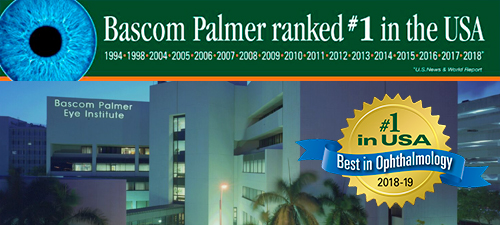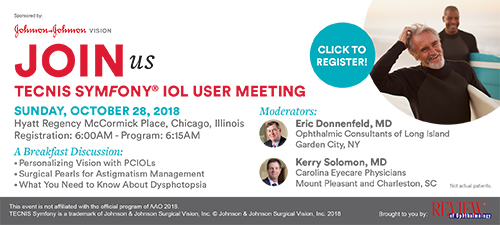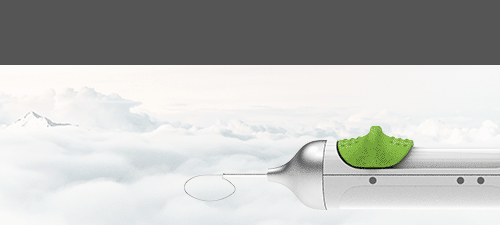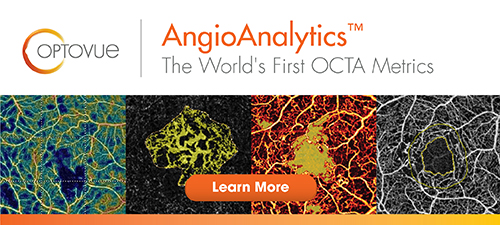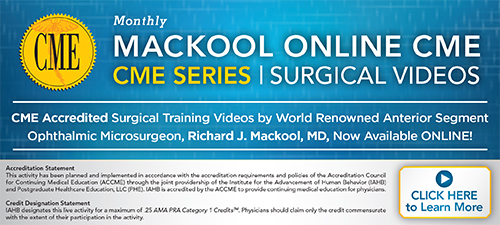FROM THE EDITORS OF REVIEW OF OPHTHALMOLOGY:

Volume 18, Number 41 |
Monday, October 8, 2018 |
|
OCTOBER IS HALLOWEEN SAFETY MONTH |
|
||||
|
Bevacizumab Dosing Every Two Weeks for Recalcitrant nAMD Investigators evaluated intravitreal bevacizumab every two weeks in refractory neovascular age-related macular degeneration as part of a retrospective study of consecutive individuals with nAMD unresponsive to monthly intravitreal anti-vascular endothelial growth factor switched to three to four biweekly injections. Twenty-seven eyes of individuals ages 82.08 ±6.85 were included. Prior to the two-week interval bevacizumab injections, 74.1 percent (n=20) were treated with bevacizumab and ranibizumab, 11.1 percent (three eyes) also received aflibercept and 14.8 percent (four eyes) had prior treatment of monthly bevacizumab (average number of injections 21.5 ±6.7).
The study demonstrated that biweekly bevacizumab injections were effective in nearly one-quarter of nAMD non-responders, with no adverse events reported. Investigators found that switching earlier, rather than later, to the low-cost modality might be of benefit for some non-responders to conventional treatment. |
|
| SOURCE: Mimouni M, Meshi A, Vainer I, et al. Bevacizumab dosing every 2 weeks for neovascular age-related macular degeneration refractory to monthly dosing. JJO 2018; Sept. 29. [Epub ahead of print]. |  |
|
AS-OCT for Corneal Imaging With Flap-related Complications Post-LASIK Scientists assessed the role of swept-source anterior segment optical coherence tomography in the diagnosis and management of laser in situ keratomileusis flap-related complications. The prospective study included 25 eyes with LASIK flap-related complications that were imaged using swept-source AS-OCT between February and August 2016, at Alforsan Eye Centre, Assiut, Egypt. The images were acquired using a 6-mm line scan. Imaging flap-related LASIK complications using AS-OCT revealed specific and nonspecific findings:
Scientists wrote that AS-OCT was useful for the assessment of flap thickness and planning of the new flap thickness in the event of an incomplete cut. They added that it was useful for diagnosis and management of eyes with LASIK flap-related complications by enabling noninvasive, noncontact, real-time acquisition of cross-sectional AS images. |
|
| SOURCE: Abdelazeem K, Mohamed S, Mohamed SGA, et al. Relevance of swept-source anterior segment optical coherence tomography for corneal imaging in patients with flap-related complications after LASIK. Cornea 2018; Sep 27. [Epub ahead of print]. |  |
|
|||
|
SLT vs. ALT in Glaucoma Cases Previously Treated With 360-degree SLT Researchers evaluated the effectiveness of selective laser trabeculoplasty compared with argon laser trabeculoplasty in a randomized clinical trial for individuals with medically uncontrolled open-angle glaucoma who previously received 360 degree SLT. In an active-equivalence, parallel-armed, randomized control trial, subjects with OAG including pigmentary dispersion syndrome and pseudoexfoliation syndrome were enrolled from seven sites across Canada. One setting of 180 degrees of either SLT or ALT was assigned randomly and applied to each participant. Main outcome measures included the change in intraocular pressure from baseline to 12 months. A total of 130 individuals completed the study per the protocol. The IOP decrease at one year compared with baseline for SLT vs. ALT was found to be different by 0.33 mmHg among the two groups (3.16 for SLT and 2.83 for ALT) and wasn’t statistically significant (p=0.71). Further analysis showed that SLT had a significantly lower IOP reduction at early time points—one week and one month, but this effect was lost by three months. Corresponding with this finding was the strong trend for ALT to fail more quickly than SLT. Although repeatable, the first repeat SLT reduced IOP to about half compared with initial SLT treatments. Researchers found that the 12 month-comparison following laser therapy revealed that both modalities lowered the IOP by approximately 3 mmHg, yet essentially all time-to-failure analyses favored SLT over ALT; the repeat SLT effect was found to be half of the initial treatment. |
|
| SOURCE: Hutnik C, Crichton A, Ford B, et al. SLT versus ALT in glaucoma patients treated previously with 360-degree slt: A randomized, single-blind, equivalence clinical trial. Ophthalmology. 2018; Sep 29. [Epub ahead of print]. |  |

|
||||||||||||||||
 |
||||||||||||||||
Review of Ophthalmology® Online is published by the Review Group, a Division of Jobson Medical Information LLC (JMI), 11 Campus Boulevard, Newtown Square, PA 19073. To subscribe to other JMI newsletters or to manage your subscription, click here. To change your email address, reply to this email. Write "change of address" in the subject line. Make sure to provide us with your old and new address. To ensure delivery, please be sure to add reviewophth@jobsonmail.com to your address book or safe senders list. Click here if you do not want to receive future emails from Review of Ophthalmology Online. Advertising: For information on advertising in this e-mail newsletter or other creative advertising opportunities with Review of Ophthalmology, please contact sales managers James Henne or Michele Barrett. News: To submit news or contact the editor, send an e-mail, or FAX your news to 610.492.1049 |
